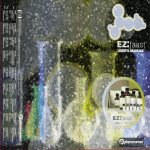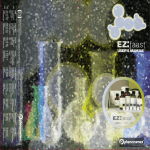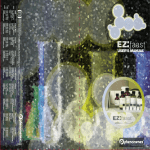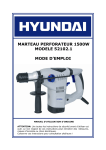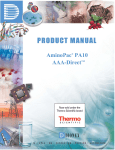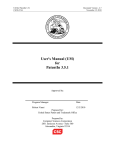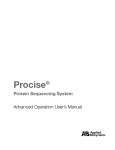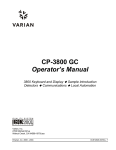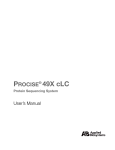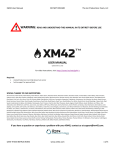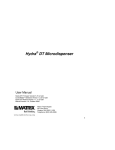Download USER`S MANUAL
Transcript
�����
�����
����
������
���
���������������
������������
����������
���
��������������
��������������
�����
��������������
�����������
������������������
����������
���������
�����������������
��������������
��������������
�����
��������������
������
���������������
������������
����������
���
��������������
��������������
�����������
��������������
������
������������������������
������������������������
�������������������
����������
������������
������������
�������
��������������
��������������
��������������
��������������������
����������������������
������������
�����������
���������������
���������
��������������
�������
��������������
��������������������
����������������������
������������
�������������
��������������
��������
��������������
�������
��������������
�������������������
�������
����������
����������
�����
����������������
�����������
�������������
�������
��������
�����������
������������
������������
�����
�����������������
���������
�����������
�������������������
���������
������������������
����������������������������������������������������������������������������������
�����������������������������������������������������������������������������������������������������������
��������������
��������������
�����
��������������
3882_L
USER’S MANUAL
by GC-MS
USER’S MANUAL
For Part Number
Phenomenex Ltd. Deutschland
Zeppelinstr. 5
63741 Aschaffenburg
Deutschland
KG0-7168
411 Madrid Ave
Torrance, CA 90501-1430
USA
I
3882_L5
of Protein Hydrolysates
For Amino Acid Analysis of Protein Hydrolysates by GC-MS
Amino Acid Analysis
User’s Manual
The following is a description of the symbols used in the EZ:faast manuals,
on EZ:faast packaging, and on EZ:faast kit components.
Symbol for “In Vitro Diagnostic Medical Device”
Symbol for “Manufacturer”
Symbol for “Authorised Representative In
The European Community”
Symbol for “Use By” and/or “Expiration Date”
Symbol for “Batch Code” and/or “Lot Number”
Symbol for “Catalogue Number”
Symbol for “Serial Number”
Symbol for “Flammable Substances”
Symbol for “Irritating or Harmful Substances”
Symbol for “Corrosive Substances”
II
TABLE OF CONTENTS
Kit Components ..........................................1
Overview ....................................................2
Sample Preparation Procedure....................5
Gas Chromatographic Analysis ..................10
Troubleshooting ........................................13
Sample Storage and Stability ....................14
Cleaning and Care of Supplies ..................14
Quality Assurance .....................................14
Product Limitations ...................................14
Ordering Information ........................... 15-16
III
User’s Manual
1.0 KIT COMPONENTS
1.1 Reagents
Reagent
Ingredients
Volume
Reagent 1
Internal Standard Solution
Norvaline 0. 2 mM
N-propanol 10%
50mL
Reagent 2
Sodium Carbonate Solution
Na2CO3
90mL
Reagent 3A
Eluting Medium Component I
Sodium Hydroxide
60mL
Reagent 3B
Eluting Medium Component II
N-propanol
40mL
Regent 4
Organic Solution I
Chloroform
4 vials, 6mL each
Reagent 5
Organic Solution II
Iso-octane
50mL
Reagent 6
Re-dissolution Solvent
Iso-octane 80%
Chloroform 20%
50mL
SD
Protein Amino Acid Standard Mixtures
Please refer to section
4.6 in the manual
2 vials, 2mL each
1.2 Supplies
Sorbent tips in racks ............................................................................................. 4x96
Sample preparation vials ....................................................................................... 4x100
Microdispenser, 20-100µL ..................................................................................... 1
Syringe, 0.6mL ...................................................................................................... 10
Syringe, 1.5mL ...................................................................................................... 10
ZB-AAA 10m x 0.25mm ID Amino Acid Analysis GC Column ................................... 1
Autosampler vials with inserts ............................................................................... 4x100
FocusLiners™ ........................................................................................................5
EZ:faast Demo Video and Reference CD ................................................................. 1
User Manual .......................................................................................................... 1
1.3 Materials Required but Not Supplied In Kit
• 100µL-1mL pipette (SoftGrip™ pipette [Phenomenex P/N AH0-5968] or equivalent)
• 30-300µL pipette (SoftGrip™ pipette [Phenomenex P/N AH0-5967] or equivalent)
• 10-100µL pipette (SoftGrip™ pipette [Phenomenex P/N AH0-5966] or equivalent)
• Pipette tips (Phenex™ [Phenomenex P/N AH0-5917 (200µL) and AH0-5920 (1mL)] or equivalent)
• Vortex
• Vials of an appropriate volume, with caps (see section 3.2)
• Pasteur pipettes for sample transfer (see section 3.4 step 15)
• Container for proper waste disposal
• Reagents and supplies for Protein Hydrolysis
• Septa (Auto-Sep T™ 11mm [SGE P/N 041883: fits Agilent or Carlo Erba instruments]
or equivalent)
1
User’s Manual
2.0 OVERVIEW
2.1 Overview
The EZ:faast amino acid analysis procedure consists of a solid phase extraction step followed by derivatization and liquid/liquid extraction; derivatized samples are quickly analyzed
by gas chromatography-mass spectrometry. The solid phase extraction is performed via
a sorbent packed tip that binds amino acids while allowing interfering compounds to flow
through. Amino acids on sorbent are then extruded into the sample vial and quickly derivatized
with reagent at room temperature in aqueous solution. Derivatized amino acids concomitantly
migrate to the organic layer for additional separation from interfering compounds. Organic
layer is then removed, evaporated, and re-suspended in re-dissolution solvent and analyzed
on a GC/MS system. Total sample preparation time takes around 8 minutes and analysis is
performed in around 7 minutes for a total start to finish time of around 15 minutes.
A video included with this kit demonstrates the simplicity of the procedure. Please be
aware that some sample preparation steps described in the video may be different than what
is described in this users manual. Please use the video as a general guide, but follow the exact
steps and sequence described in this manual.
2.2 Amino Acids and Related Compounds in Protein Hydrolysate Samples
The EZ:faast method has been developed for the analysis of more than 60 aliphatic and
aromatic amino acids, including primary and secondary amines. Further amino acids and
related compounds may be analyzed with this kit. A brief adjustment of gas chromatographic
conditions may be necessary. Please contact Phenomenex for method modifications and other
LC and GC amino acid kits.
Included with the EZ:faast kit is a CD that contains spectral libraries for most amino acid
derivatives as run by the EZ:faast methodology. Spectral libraries are included for Varian
Saturn™ and Agilent Chemstation software systems.
Table 1 - Protein Amino Acids analyzed by the EZ:faast Amino Acid Analysis Kit for Protein Hydrolysates
by GC-MS:
Chemical Name
Abbreviation
Alternate Abbreviations
Alanine
ALA
A
Glycine
GLY
G
Valine
VAL
V
Leucine
LEU
L
Isoleucine
ILE
I
Threonine
THR
T
Serine
SER
S
Proline
PRO
P
Asparagine**
ASN
N
Aspartic Acid
ASP
D
Methionine
MET
M
4-Hydroxyproline
HYP
OHPro
Glutamic Acid
GLU
E
Phenylalanine
PHE
F
Glutamine**
GLN
Q
Lysine
LYS
K
Histidine
HIS
H
Hydroxylysine (2 isomers)
HLYS
HLY; OHLys
Tyrosine
TYR
Y
Tryptophan*
TRP
W
Cystine
C-C
(Cys)2
*TRP is completely lost during acid hydrolysis; use alternative hydrolysis procedure to analyze for TRP
** ASN and GLN are quantitatively converted to ASP and GLU during acid hydrolysis
2
User’s Manual
Table 2 - Comprehensive list of amino acids and related compounds prepared by EZ:faast for GC/MS
analysis (internal standard listed in bold)
Chemical Name
Ethanolamine
Alanine
Alliin
Sarcosine
Glycine
α-Aminobutyric acid
Valine
Fluoro-alanine
ß-Alanine
ß-Aminoisobutyric acid
ß-Amino-n-butyric acid
Norvaline
Leucine
allo-Isoleucine
Isoleucine
Homoserine
Norleucine
Threonine
γ-Amino-n-butyric acid**
Serine
Proline
Asparagine
3-Methyl-cysteine
Pipecolic Acid
Thioproline
Aspartic acid
Methionine
3-Hydroxyproline
4-Hydroxyproline
Phenyl-glycine
Seleno-methionine
Glutamic acid
Phenylalanine
α-Aminoadipic acid
Cysteine
4-Aminobenzoic acid
Homophenylalanine
α-Aminopimelic acid
Chloro-phenylalanine
Histamine
Glutamine
Theanine
Bicine
2,4-Diamino-n-butyric acid
Glycyl-glycine (dipeptide)
Homocysteine
Methionine sulfone
Abbreviation
ALA
SAR
GLY
ABA
VAL
ß-ALA
ß-AiB
ßABA
NORV
LEU
aILE
ILE
HSER
NLE
THR
GABA
SER
PRO
ASN
HPRO
TPR
ASP
MET
3HYP
4HYP
PHE-GLY
Se-MET
GLU
PHE
AAA
CYS
PABA
HPHE
APA
Cl-PHE
HA
GLN
THE
DABA
GLY-GLY
HCYS
Alter.
Abb.
A
G
V
L
I
T
S
P
N
D
M
OHPro
E
F
C
Q
GC/MS Major Ions Observed (SIM) LOD* (nmol/mL)
Instrument
S/N 3:1
Agilent 5973 Varian Saturn 2000 FID
MS
116, 117
130, 88
130, 70
1
0.1
216, 173, 129
130, 217
130, 88
1
0.1
116, 207
116, 102
2
0.1
144, 102
144, 102
1
0.2
158, 116
116, 98, 158
0.6
0.2
129, 158, 98
158, 116
88, 70
158, 72
172, 86
172, 130
172, 130
102, 128, 143
172, 86
160, 101
130, 144, 172
146, 203
156, 243
155, 69
172,259,130
130, 84, 144
4
0.2
0.7
0.7
0.7
0.1
0.1
0.2
101
2
0.2
101, 86
156, 114
113
2
1
2
0.2
0.1
2.5
0.4
0.9
0.9
0.1
0.1
0.2
2
0.2
158, 116
172, 130
130, 101
130, 101
174, 147
216, 130
203, 277
172,259,130
172, 86
174, 147
216, 130
101, 203, 129
230, 170
206, 190
244, 98
248, 162, 206
265, 206, 163
84, 142
147, 128, 91
98, 125
2
0.5
1
0.2
0.2
0.2
198, 258, 286
198, 138, 112
0.5
0.4
8
10
180, 168, 223
84, 187
112, 215
290,260
203, 142, 245
117, 144, 201
142, 203
3
172, 86
84, 112
User’s Manual
Table 2 - (continued)
Chemical Name
Abbreviation
Methionine sulfoxide
S-Carboxymethyl-cysteine
Ornithine
ORN
Glycyl-proline (dipeptide)
GPR
Tyramine
Lysine
LYS
Threonine-aspartic acid (dipeptide) THR-ASP
Histidine
HIS
Naphthyl-alanine
Seleno-cystine
Se-C-C
Hydroxylysine (2 isomers)
HLY
Tyrosine
TYR
Diaminopimelic
DAPA
Proline-hydroxyproline (dipeptide) PHP
Tryptophan
TRP
Lysine-alanine (dipeptide)
LYS-ALA
Dopamine
DA
3-Nitrotyrosine
Aspartame
Cystathionine
CTH
3,4-Dihydroxyphenylalanine
DOPA
Cystine
C-C
Serotonin
SRO
Homocystine
HC-CH
Arginino succinic acid
ARG-SUC
Ethionine
ETH
Alter.
Abb.
O
G-P
K
H
OHLys
Y
W
(Cys)2
(Hcys)2
GC/MS Major Ions Observed (SIM) LOD* (nmol/mL)
Instrument
S/N 3:1
Agilent 5973 Varian Saturn 2000 FID
MS
229,182,138
144,203,262
156, 70
156, 139, 114
1
0.2
70, 300
153, 114
1
5
120,107,162
170, 128
153, 170, 128
1
0.2
218, 360, 130
282, 168
267, 222, 136
1
0.2
129, 169
206, 107
256, 168
156, 186
130
170, 224, 153
179, 136, 123
152, 209
302
203, 272
222, 123
248, 216
146,288,348
230, 188, 128
441, 326
203, 291, 143
87, 129
164, 107
2
0.4
10
0.2
156, 114
130
0.9
0.4
10
0.1
146, 114
4
10
114, 173
4
10
*LODs were determined for amino acids included in standard mixtures provided with the kit
**Several amino acids coelute under the chromatographic conditions specified in the user manual (e.g. GABA & SER)
2.3 Storage and Stability
Store Reagents 1, 3B and 4 at 4°C. Store amino acid standard solutions in the freezer. All
other components may be stored at room temperature. For your convenience, the bottom of the
reagent box has been designed as a tray, which can be easily lifted from the work station and
placed in the refrigerator when the kit is not in use for an extended period of time.
All components are guaranteed for 12 months or more (see label on bottle/vial) from the date
of purchase when stored at recommended temperatures and used as described in this manual.
Please review the Instruction Manual included with the Drummond® Dialamatic Microdispenser
for recommended usage and warranty information. Please observe recommendations for solvent
bottle handling and syringe cleaning in Section 7.0 of this manual.
2.4 Safety
Although the concentration of all toxic components in any of the reagent bottles is low,
for safety reasons the sample preparation station should be placed in an exhaust hood and
protective gloves and goggles should be worn. When working with biological fluids, please
take any necessary precautions to prevent infection with blood borne pathogens. Appropriate
bio-safety precautions and disposal of bio-hazardous wastes should be followed.
4
User’s Manual
3.0 SAMPLE PREPARATION PROCEDURE
3.1 Setup
The EZ:faast kit packaging has been designed as an efficient workstation. It holds a
reagent tray, a vial rack, a pipette rack and a section for sorbent tips and vials. To speed up
sample preparation it is recommend that the workstation be arranged as shown in figure 1a.
By following directions and markings on the reagent box by breaking it along perforations it
can be transformed into a reagent tray. When the kit is not in use for several days, the reagent
tray (figure 1b) may be conveniently removed and placed in the refrigerator.
WORKSTATION ARRANGEMENT - (FIGURE 1)
To speed up sample preparation it is recommended that the workstation be arranged as
shown below.
Figure 1b
Figure 1a
3.2 Preparing the Eluting Medium
The volume of prepared Eluting Medium depends upon the number of samples to be analyzed during the day (200µL/sample). The eluting medium should be prepared fresh each day:
1. Use capped vials of appropriate size (not included) for preparation of the Eluting Medium
2. Combine 3 parts Reagent 3A (Eluting Medium Component I) with 2 parts Reagent 3B (Eluting
Medium Component II) in an appropriate sized vial (see Table 3, below, for reagent volumes
based on number of samples). Mix briefly.
3. Store prepared eluting medium during the day at room temperature. Discard any unused mixture
at the end of the day. The freshly prepared Eluting Medium vial may be placed in one of the
empty slots in the reagent tray.
Table 3 - For your convenience check the table below to determine the volume of Eluting Medium
components needed depending on your number of samples:
Number of
Samples
2
4
7
12
14
19
24
29
34
39
44
49
Reagent 3A Eluting
Medium Component I
300µL
600µL
900µL
1.5mL
1.8mL
2.4mL
3.0mL
3.6mL
4.2mL
4.8mL
5.4mL
6.0mL
Reagent 3B Eluting
Medium Component II
200µL
400µL
600µL
1.0mL
1.2mL
1.6mL
2.0mL
2.4mL
2.8mL
3.2mL
3.6mL
4.0mL
5
User’s Manual
3.3 Protein Sample Hydrolysis
3.3.1 Background
There are numerous published methods for protein hydrolysis; all are compatible with
analysis by the EZ:faast procedure with minor modifications to the described method. The
most common methods use acid hydrolysis with 6M HCl in either a liquid or vapor phase.
(Stein and Moore, Methods in Enzymology 6, 819-831, 1963; Tarr et. al. In Microcharaterization of Proteins {J.E. Shively, ed.}, Humana Press {1986}). While these methods give good
results for a majority of amino acids, there are several amino acids that are either partially or
completely destroyed by such methods and alternate hydrolysis methods must be used. For
convenience a common liquid and vapor phase method are shown; hydrolysis reagents and
supplies are not included with the EZ:faast kit.
3.3.2 Vapor Phase Hydrolysis
The following is a sample method for vapor phase hydrolysis as a reference; other methods may work better for your application:
1. Transfer 1-20 nanomoles of protein into an autosampler vial insert.
2. Lyophilize sample in a vacuum concentrator.
3. In a hydrolysis vessel add: 989µL 6N constant boiling HCl, 10µL 5% Phenol, and 1µL
betamercaptoethanol.
4. Add vial inserts into hydrolysis vessel and cap with minaret valve.
5. Place vessel in an ice bucket, and purge with nitrogen and vacuum several times and seal vessel
under vacuum.
6. Hydrolyze in oven at 110ºC for 24 hours.
7. Cool vessel and remove vial inserts.
8. Dry down any remaining acid in sample vial using a speed vac evaporator. Pipette 100µL of
Reagent 1 into sample vial to re-dissolve amino acids. (Section 3.4.2)
9. Perform EZ:faast procedure as per manual.
3.3.3 Liquid Phase Hydrolysis
The following is a sample method for liquid phase hydrolysis as a reference; other methods
may work better for your application.
1. Transfer 5-25 nanomoles of protein into a glass test tube (10x150mm).
2. Lyophilize sample in a vacuum concentrator.
3. Add 100µL of 6N HCl containing 4% Thioglycolic acid to tube.
4. Purge air from tube with vacuum and flame seal tube.
5. Hydrolyze in oven at 110ºC for 22 hours.
6. Cool tube, break seal, and perform EZ:faast procedure as per manual.
3.3.4 Limitations of Hydrolysis Methods
While 6N HCl acid hydrolysis is the most common procedure, there are several limitations
to this method. ASN and GLN are deamidated to ASP and GLU, and thus are quantitated as a
6
User’s Manual
mixture. Peptide bonds of hydrophobic amino acids (VAL, ILE, LEU) may be difficult to break
and require additional hydrolysis time (up to 72 hours). Residual oxygen in the hydrolysis
vessel can increase the thermal breakdown of hydroxyl and sulfur containing amino acids
(typical recoveries for SER, THR, HYP, and TYR range between 50-90%, MET ranges from 2575%). Reducing hydrolysis time improves recoveries but reduces other amino acid yields (see
above). GLY yields tend to exceed 100% (especially for low level samples) due to background
protein contamination. Finally, both TRP and CYS are completely destroyed by acid hydrolysis
and must be analyzed by alternate methods (see below). The above listed limitations are
based on hydrolysis chemistry and are not related at all to the EZ:faast process.
3.3.5 Alternate Methods and References
For TRP analysis the use of either 4N Methane Sulfonic Acid, Dodecanethiol/HCl, or Thioglycolic acid has been shown to generate some useful results for TRP, however yields tend to be
low for all of these methods.
For CYS analysis reduction and alkylation to generate either carboxymethyl cysteine or
pyridylethyl cysteine are the preferred methods for detection for EZ:faast procedure (cysteic
acid cannot be detected by EZ:faast). Procedures for useful hydrolysis methods can by found
in the following references:
•
•
•
•
•
Stein and Moore, Methods in Enzymology 6, pp 819-831 (1963)
Tarr in: Microcharacterization of Proteins (Shively, ed.) Humana Press, (1986)
Miedel et. al. J. Biochem. Biophys. Methods 18, pp 37-52 (1989);
Strydom et. al. In Techniques in Protein Chemistry IV (Angeletti, ed., 1993)
Jones et. al. J. Liquid Chromatography 4, pp 454-486 (1981)
For additional information contact your Phenomenex Technical Representative.
3.4 Sample Preparation by SPE and Derivatization
Please first refer to section 3.2 if you have not prepared fresh Elution Medium yet. The freshly prepared Eluting Medium vial may be placed in one of the empty slots in the reagent tray.
1. For each sample, line up one glass sample preparation vial in the vial rack (Figure 2). Be aware
of some variability in vial opening and sorbent tip dimensions, which may prevent the tip from
reaching to the bottom of the sample preparation vial.
Note: droplets of liquid in SPE tip or spilled sorbent particles will not affect the precision of the assay in any way.
2. Add sample as follows:
For vapor phase hydrolysates: Dry down any remaining acid in sample vial using a speed vac
evaporator. Pipette 100µL of Reagent 1 into sample vial to re-dissolve amino acids. Transfer
sample (if necessary) to EZ:faast sample vial and proceed.
For liquid phase hydrolysates: pipette 100µL (or less) of the hydrolysate sample and 200µL of
Reagent 2 into a vial (keep the ratio of hydrolysate: Reagent 2 = 1:2) and mix briefly. The mixture
should have a pH greater than 1.5 (but less than pH 5.0). Check the pH of one sample with pH
paper; all other samples prepared by the same procedure should have a similar pH. Pipette 25µL
of mix and 100µL Reagent 1 into each sample preparation vial.
Note: In both cases, calculate the multiplication factor for quantitative analysis by taking into account the amount
of sample, and the volumes of HCl, Reagent 2, or water used.
Note: Amino acid standard mixtures come with the correct pH. No pH adjustment is needed as described above.
Just add 100µL Reagent 1 to the amino acid standard mixture, and proceed with the SPE as described at step 3.
7
User’s Manual
GLASS VIAL LINE UP - (FIGURE 2)
For each sample, line up one sample preparation vial in the vial rack.
Figure 2
3. Attach a sorbent tip to a 1.5mL syringe and loosen the syringe piston; immerse the tip and pass
the solution in the sample preparation vial through the sorbent tip by SLOWLY pulling back the
syringe piston in VERY small steps.
Caution: Do not quickly pull back the piston. Try to take at least one minute to pass the sample
through the sorbent tip. Watch as the liquid accumulates inside the syringe barrel and move the
piston only as the accumulation slows down. The syringe should be capable of drawing all sample,
and subsequent wash into the barrel. If you run out of piston range, detach the sorbent tip, expel the
solution from syringe barrel, then reattach the sorbent tip and proceed with sample preparation.
Note: the sorbent tip should stay in the sample preparation vial through steps 3-10 (see Figure 3) even when
dispensing reagents. In case the sorbent tip cannot reach to the bottom of the vial, tilt the vial to 45°, push the tip
into the vial gently and proceed with the SPE step.
4. Pipette 200µL HPLC grade water into the same sample preparation vial.
5. Pass the water through the sorbent tip and into the syringe barrel SLOWLY. Drain the liquid from
the sorbent bed by drawing air through the tip.
6. Detach the syringe from the sorbent tip while keeping the tip inside the sample preparation vial.
Discard the liquid accumulated in the syringe.
Note: save the syringe, as it can be reused with many other samples. For convenience place it into the pipette rack.
7. Pipette 200µL Eluting Medium (prepared fresh each day, section 3.2) into the same sample
preparation vial (see Figure 3).
8
User’s Manual
KEEP THE SORBENT TIP IN THE VIAL - (FIGURE 3)
Keep the sorbent tip in the sample preparation vial through steps 3-10, even while dispensing reagents.
Figure 3
8. Pull back the piston of a 0.6mL syringe halfway up the barrel and attach the sorbent tip used in
steps 3-6.
9. Wet the sorbent with Eluting Medium; watch as the liquid rises through the sorbent particles and
stop when the liquid reaches the filter plug in the sorbent tip.
10. Eject the liquid and sorbent particles out of the tip and into the sample preparation vial. Repeat
step 9 and 10 until the sorbent particles in the tip are expelled into the sample preparation vial.
Only the filter disk should remain in the empty tip, see Figure 4. Keep the syringe as it can be
reused with many other samples.
11. Using the adjustable Drummond Dialamatic Microdispenser (included), transfer 50µL Reagent 4
into the sample preparation vial.
Caution: Avoid cross-contamination by not touching the inner wall of the sample vial with the tip of
the Microdispenser. The piston will ensure proper transfer of liquids into the vial without the need of
touching the vial wall. Use the same Microdispenser with both Reagents 4 and 5. There is no need
to change Microdispenser tips or to wash between uses.
Warning: Do not use regular pipettes and tips with Reagent 4 and 5 as they will contaminate the
sample! Use the included Microdispenser for Reagents 4 and 5 ONLY!
Note: for all subsequent sample preparation steps use a vortex mixer set in the touch (pulse) mode (to about 80%
of max speed) for any mixing operations.
12. Emulsify the liquid in the vial by repeatedly vortexing for about 5-8 seconds. During vortexing
hold the sample vial firmly between fingers, and keep it straight as you push it onto the vortex
plate. Do not let the vial wobble, otherwise liquid may come out of the vial. Allow reactions to
proceed 1 minute or more. The emulsion will gradually separate into two layers.
Note: a longer reaction time than 1 minute each at steps 12 and 13, or later, at step 14, does not affect results.
13. Re-emulsify the liquids in the vial by vortexing again for about 5 seconds. Allow the reaction to
proceed for one additional minute or more.
14. Transfer with the Microdispenser 100µL Reagent 5 (50µL twice, for convenience) and mix for
about 5 seconds. Let the reaction proceed for one more minute.
15. Transfer the (upper) organic layer (about 50-100µL) using a Pasteur pipette into an autosampler
vial (included), and evaporate the solvent under a gentle stream of nitrogen. Do not leave
samples under the nitrogen stream for more than 10 minutes! Re-dissolve amino acid
derivatives in 50-100µL Reagent 6. Transfer the reconstituted sample into an insert (included)
using a Pasteur pipette, and place the insert in the same autosampler vial. The reconstituted
sample is ready for GC-MS analysis (see GC-MS set up and calibration in section 4).
9
User’s Manual
3.5 Optimizing Sample Preparation Time
For experienced users, sample preparation proceeds in 7-8 minutes per sample. This process
can be further improved by preparing up to ten samples at a time. For example, at step 2 dispense Reagent 1 (and at later steps all other reagents) in ten vials successively, using the same
pipette tip. At step 9, after dispensing Reagent 4, vortex 2-3 vials simultaneously. During each
one minute wait at steps 10-12, prepare autosampler vials for sample transfer.
SORBENT TIP - (FIGURE 4)
Wet the sorbent with Eluting Medium and stop before it gets to the filter then eject the
liquid and sorbent particles out of the tip.
Figure 4
Filter
Sorbent
4.0 GAS CHROMATOGRAPHIC ANALYSIS
4.1 Column For EZ:faast Amino Acid Analysis in Protein Hydrolysates by GC-MS
(included)
The Zebron ZB-AAA GC column for Protein Hydrolysate comes without a cage. Connect
the ends of the column in the usual manner; rest the column coil on the oven bracket. Keep
the pieces of thermal thread spaced evenly around the column coil. The maximum column
temperature is 320/340°C.
Caution: Always wear safety glasses while installing the GC column.
4.2 Instrument Settings:
GC
Injection*
Carrier Gas
Oven program
Split 1:15@250°C, 1.5-2µL (with hot needle, see section 4.5)
Helium 1.1mL/min constant flow
30°C/min from 110° to 320°C
MS
Source
240°C
Quad
180°C
Auxiliary
310°C
Scan Range
45-450 m/z
Sampling Rate
2² (3.5 scans/s)
*When using a Shimadzu GC instrument, please increase the injector temperature to 300°C
For your convenience we have included the GC/MS methods for Shimadzu QP-2010, Varian
Saturn™ 2000 and Agilent 5973 GC/MS systems on the reference CD included with the kit. To
use these included methods: copy the method folder into the appropriate method folder in your
software and load.
10
User’s Manual
4.3 Liners
Use the best deactivated liners supplied by the instrument manufacturer. Good results were
obtained with FocusLiners™ (Phenomenex P/N AG0-4680; fits Agilent and Varian 1177 injectors). In general, the liner should carry a plug of silanized quartz or pesticide grade glass wool.
4.4 Injection
• Split injection at a ratio of 1:10 to 1:20 is recommended
• Injection volumes of 1.5-2µL are optimal
Quasi-splitless injection mode, will produce a 5 to 10 fold increase in sensitivity with
some instruments. In this mode, the split valve should be closed for an initial 5 to 7 seconds.
Before selecting this injection mode it should be checked experimentally that no significant
discrimination of late eluting amino acid derivatives takes place in comparison with common
split injection. Alternatively, instruments equipped with EPC/AFC can be run with double initial
head pressure for 6-10 seconds.
4.5 Sampling
Both autosampler and manual sampling can be performed. If manual sampling is preferred, hot needle injection is recommended to prevent discrimination of components with
high boiling temperatures. With this technique the sample plug is completely drawn into the
syringe barrel, leaving the needle empty. The needle is inserted and kept in the hot injector
for about two seconds before injection.
4.6 Calibration Standards
For quantitation purposes, mixtures of amino acid standards should be prepared following
the Sample Preparation by SPE and Derivatization procedure described in this manual in
Section 3.4. Amino acid standard mixtures should be stored in the freezer! With standards,
no pH adjustment is necessary. Simply add 100µL Reagent 1 (Internal Standard solution) and
proceed with sample preparation.
The amino acid standard mixture for protein hydrolysates (SD) is composed of the
following amino acids (200 nmoles/mL each):
ALA
ASP
C-C
GLU
GLY
HIS
HLY
HYP
ILE
LEU
LYS
MET
PHE
PRO
SER
THR
TRP*
TYR
VAL
*TRP can be analyzed only in hydrolysates prepared under alkaline conditions
Note: the amino acids included in SD are the most widely analyzed for protein hydrolysates. For assistance with
additional amino acids in your hydrolysate sample, please contact Phenomenex.
11
TRP
C-C
HIS
HLY
GLU
LYS
MET
ASP
SER
30
HYP
40
PRO
50
THR
60
VAL
IS
LEU
ILE
PHE
Norm.
70
ALA
GLY
Figure 5
TYR
User’s Manual
20
10
0
1.5
2
2.5
3
3.5
4
4.5
5
5.5
6
min
Figure 5. A typical chromatogram of the amino acid standard solution included in this kit. Elution order: tR
1.35min ALA; 1.46 GLY; 1.67 VAL; 1.80 IS = NVAL; 1.88 LEU; 1.94 ILE; 2.16 THR; 2.20 SER; 2.28 PRO; 2.94 ASP;
2.98 MET; 3.12 HYP; 3.31 GLU; 3.34 PHE; 4.65 LYS; 4.84 HIS; 5.02 HLY; 5.13 TYR and 6.15 C-C. Column and
instrumental settings as specified in section 4.1-4.2.
4.7 Calibration Procedure
Use the following standard amino acid mixtures for sample preparation and make duplicate injections of each to generate the desired calibration:
Calibration Solution
I. 25µL of SD solution, plus 100µL Reagent 1(calibration level I: 50 nmol/mL)
II. 50µL SD solution, plus 100µL Reagent 1(calibration level II: 100 nmol/mL)
III. 100µL SD solution, plus 100µL Reagent 1(calibration level III: 200 nmol/mL)
The concentration of the internal standard (IS) in the sample prepared for chromatographic
analysis is 200 nmoles/mL.
Note: disregard the first 3-5 injections when performing method calibration. These injections act as primers and
mask active sites inside the liner and chromatographic column. Use subsequent duplicate runs for calibration.
Remember: the SD vial should be placed in the freezer after use! Allow standards to reach
room temperature before use!
4.8 Calculation of Analytical Results
Calculations of amino acid levels in hydrolysed samples are performed by the Data
Analysis portion of the software controlling the analytical instrument (gas-chromatograph).
Calculations and calibration are based on an internal standard. Results are reported in the
units entered for the internal standard and analyte levels in calibration mixtures.
Note: nmols/mL are equivalent to µmols/L.
4.9 Amino Acid and Protein Quantitation Calculations
For additional information regarding protein quantitation calculations, as well as example
calculation spreadsheets please refer to reference CD included in kit.
12
User’s Manual
5.0 TROUBLESHOOTING
Problem
Cause
Solution
Decrease in peak height for basic
amino acids
Old eluting medium
Decrease in peak height or missing
peaks for late eluting (C-C), or polar
amino acids (HIS, SER, HYP)
Decrease in peak height for early
eluting amino acids
Improper liner
Prepare eluting medium daily based
on the number of samples to be
analyzed on that day
Use deactivated liners, see section
4.3. Analyze samples only after
making priming injections.
Use less sample for preparation, see
section 3.3, step 2. Constantly monitor the area for the IS peak.
Adjust nitrogen flow to minimal;
stop evaporation before sample gets
completely dry
Check instrument for leaks (reinstall
the column and check o-ring on
liner)
Recalibrate pipette used for
dispensing Reagent 1. Constantly
monitor area for IS.
Use polypropylene pipette tips of
appropriate quality (see ordering
info on page 15). Always use the
Microdispenser for dispensing
Reagents 4, 5, and 6. Use Pasteur
pipettes to transfer the reconstituted
sample into a glass insert.
Use the vials provided in the
kit. For autosampler vials order
Phenomenex P/N AH0-4610 and for
inserts AH0-4604.
Make sure to sample only the upper,
organic layer. Remove the first 20cm
of column and re-install. Evaporate
residual reagents at step 15, section
3.4. Do not use samples prepared as
described in the EZ:faast kit for the
analysis of amino acids in protein
hydrolysates by GC-FID.
Samples collected with EDTA and
heparin anticoagulants are recommended. Confirm peak identity
based on mass-spectrum.
Low peak height for late eluting
derivatives
Sample too concentrated; the
capacity of the SPE tip exceeded
Volatile derivatives evaporated
during removal of residual reagents
with nitrogen gas
Carrier gas leak
Peak height for IS (Norvaline) lower
compared to other early eluting
amino acids in the standard mix
Ghost peaks
Pipetting error
Early deterioration of column
performance
Residual sample preparation
reagents degrade column stationary
phase
Interfering peaks, drug metabolites
Physiological sample anticoagulants,
like citrate or citric acid may interfere in the amino acid profile
Pipette tips used for dispensing
reagents or for transferring prepared
samples may be a source of contaminant peaks
Interfering peaks may result from
extracted contaminants in plastic
sample preparation vials
13
User’s Manual
6.0 SAMPLE STORAGE AND STABILITY
Some amino acids are chemically unstable in physiological fluids (e.g., progressive
decline of plasma cystine in time), and also in standard mixtures. Keep samples and standard
mixtures in the freezer. Old amino acid standard mixtures and mixtures which have not
been stored properly should not be used for instrument calibration. Order fresh mixture from
Phenomenex (see ordering info in Phenomenex catalog).
Samples prepared for GC-MS analysis following the procedure outlined in this manual may
be stored for several days in a freezer before analysis. For longer storage we recommend that
samples be desiccated with anhydrous sodium sulfate, and vials be capped. Since sample preparation is expeditious with this procedure we recommend analyzing samples prepared freshly.
Samples prepared during the day may be left on the autosampler tray, at room temperature, to
be analyzed during the night, or the next day.
7.0 CLEANING AND CARE OF SUPPLIES
The Drummond® Dialamatic Microdispenser should be flushed with isopropanol: acetone
(approx. 1:1) at the end of the day. Please review the Drummond Microdispenser users
manual for further care and use notes. The same organic mix is recommended as wash for
both manual syringes and autosamplers.
Plastic syringes used for sample clean-up by SPE can be cleaned by flushing with propanol:
water (1:2, v/v) mixture. Always tightly cap the reagent bottles when not in use in order to
avoid solvent evaporation and alteration of reagent composition. Cover the racks holding
sorbent tips when not in use to prevent contamination.
8.0 QUALITY ASSURANCE
All components of the EZ:faast Gas Chromatographic Amino Acid Analysis kit are subjected
to rigorous quality control testing. These measures help to ensure the best results. If poor
results occur, please contact your Phenomenex technical consultant or distributor.
9.0 PRODUCT LIMITATIONS
Phenomenex Analyte Specific Reagent products are not intended for clinical use. Because
they are not intended for clinical use, no claim or representation is made or intended for their
clinical use (including, but not limited to diagnostic, prognostic, therapeutic or blood banking).
It is the user’s responsibility to validate the performance of Phenomenex products for any particular use, since the performance characteristics are not established. Phenomenex products
may be used in clinical diagnostic laboratory systems after the laboratory has validated their
complete system as required by the Clinical Laboratory Improvements Amendments of 1988
(CLIA ’88) regulation in the U.S. or equivalent in other countries.
Trademarks
EZ:faast Sorbent Tips are patented, Phenomenex, Inc. U.S. Patent 6,770,246
EZ:faast is a trademark of Phenomenex, Inc.
Phenex is a trademark of Phenomenex, Inc.
FocusLiner and Auto-Sep T are trademarks of SGE
SoftGrip is a trademark of Hamilton
Drummond is a registered trademark of the Drummond Corp.
Registered names, trademarks, etc. used in this document, even when not
specifically marked as such, are not to be considered unprotected by Law.
©2005-2006 Phenomenex,Inc. All rights reserved.
14
ordering information
User’s Manual
EZ:faast™ Kit
Each kit includes: a ZB-AAA GC column (or EZ:faast AAA LC column), GC liners with GC
kits, sample prep and derivatization reagents, sample prep vials, AA standard mixtures,
SPE sorbent tips, vial rack, autosampler vials with inserts come with MS kits, Microdispenser for Reagents 4 and 5, and demo video.
Description
GC-FID Free (Physiological) Amino Acid Analysis Kit
GC-MS Free (Physiological) Amino Acid Analysis Kit
GC-FID Protein Hydrolysate Kit
GC-MS Protein Hydrolysate Kit
LC/MS Free (Physiological) Amino Acid Analysis Kit with 250 x 2.0mm column
LC/MS Free (Physiological) Amino Acid Analysis Kit with 250 x 3.0mm column
LC/MS Protein Hydrolysate Kit with 250 x 2.0mm column
LC/MS Protein Hydrolysate Kit with 250 x 3.0mm column
GC Free (Physiological) Amino Acid Standards (SD1, SD2 & SD3) 2mL/vial x 2
GC Protein Hydrolysate Standard (SD) 2mL/vial x 2
LC/MS Free (Physiological) Amino Acid Standards for LC (SD1, SD2, & SD3) 2mL/vial x 2
LC/MS Protein Hydrolysate Standard (SD) 2mL/vial x 2
15
Order No.
KG0-7165
KG0-7166
KG0-7167
KG0-7168
KH0-7337
KH0-7338
KH0-7339
KH0-7340
AG0-7184
AG0-7263
AL0-7500
AL0-7501
Unit
ea
ea
ea
ea
ea
ea
ea
ea
ea
ea
ea
ea
ordering information
User’s Manual
Phenex™ Vials
This universal vial can be used in any autosampler that utilizes a 12 x 32mm vial. It
may be used in place of crimp top and snap ring top vials. Eliminates the need of stocking
many different style vials. The top screws down in 1/3 turn and eliminates the chore of
crimping, de-crimping and snapping caps on. Cap comes with a bonded-in septa that
eliminates septa slipping into vials. Vials and caps with bonded-in septa come in one
convenient kit pack.
Description
Clear wide mouth vial, cap and septa kit pack with:
Rubber/PTFE septa
Silicone/PTFE septa
PTFE/Silicone/PTFE septa
Amber wide mouth vial, cap and septa kit pack with:
Rubber/PTFE septa
Silicone/PTFE septa
Clear wide mouth vial, cap with pre-slit septa:
Silicone/PTFE septa
Order No.
Unit
AH0-4610
AH0-4613
AH0-4616
1000/pk
1000/pk
1000/pk
AH0-4619
AH0-4622
1000/pk
1000/pk
AH0-7507
1000/pk
SGE FocusLiners™
Description
GC Model
No.
Thermo Electron 8000 series
(Carlo Erba)
Single Taper/
Gooseneck
Liner
Agilent
5880/5890
Technologies
/6890
Single Taper/
Gooseneck
Liner
PerkinElmer
Autosystem
Single Taper/
Gooseneck
Liner
Shimadzu
17B
Single Taper/
Gooseneck
Liner
Varian
1075/77
Single Taper/
Gooseneck
Liner
Varian
1078/79
Double Taper/
Gooseneck
Liner
Dimensions ID
ID x L x OD(mm)
5 x 105 x 8.0
Material*
(deactivated)
B (y)
Quartz
Wool (Y/N)
Y
Mfr P/N
Order No.
Unit
092046
AG0-4679
5/pk
4 x 78.5 x 6.3
B (y)
Y
092003
AG0-4680
5/pk
4 x 92 x 6.2
B (y)
Y
092095
AG0-4681
5/pk
3.4 x 95 x 5
B (y)
Y
092068
AG0-4683
5/pk
4 x 72 x 6.3
B (y)
Y
092025
AG0-4684
5/pk
3.4 x 54 x 5
B (y)
Y
092036
AG0-4685
5/pk
* B=Borosilicate; Deactivated=Yes (y) or No (n)
16
User’s Manual
EZ:faast - Amino Acid Analysis of Protein
Hydrolysates by GC-MS
QUICK REFERENCE GUIDE
Summary of Procedure:
1. For each sample line up one glass sample preparation vial in the vial rack.
2. Vapor phase hydrolysate: Dry down any remaining acid in sample vial using a speed vac evaporator.
Pipette 100µL of Reagent 1 into sample vial to re-dissolve amino acids. (Section 3.4.2)
Liquid phase hydrolysate: Pipette 100µL sample hydrolysate, and 200µL Reagent 2 into a glass vial
and mix briefly. If pH>1.5, pipette 25µL of mix and 100µL Reagent 1 into each sample preparation vial.
(Section 3.4.2)
3. Attach a sorbent tip to a 1.5mL syringe; pass the solution in the sample preparation vial through the
sorbent tip by slowly pulling back the syringe piston.
4. Pipette 200µL of water into the sample preparation vial.
5. Slowly pass the solution through the sorbent tip and into the syringe barrel.
6. Detach the sorbent tip, and discard the liquid accumulated in the syringe.
7. Pipette 200µL Eluting Medium (prepared fresh each day, section 3.2) into the sample preparation vial.
Detach Here
8. Pull back the piston of a 0.6mL syringe halfway up the barrel and attach the sorbent tip.
9. Wet the sorbent with Eluting Medium; stop when the liquid reaches the filter plug in the sorbent tip.
10. Eject the liquid and sorbent out of the tip and into the sample preparation vial. Repeat, until all sorbent
particles in the tip are expelled into the sample preparation vial. Discard the empty tip.
11. Using the Drummond Dialamatic Microdispenser, transfer 50µL Reagent 4.
12. Emulsify by repeatedly vortexing the solution for about 5 seconds. Allow reaction to proceed for
about 1 minute.
13. Vortex the solution again for a few seconds to re-emulsify the content of the vial. Allow the reaction to
proceed for at least one additional minute.
14. Using the Microdispenser, transfer 100µL Reagent 5, and re-emulsify by vortexing for about 5 seconds.
Let the reaction proceed for 1 minute.
15. Transfer part of the (upper) organic layer (50-100µL) using a Pasteur pipette into an autosampler vial.
Avoid transferring aqueous layer along with the organic layer. Evaporate the solvent SLOWLY to almost
dry under a gentle stream of nitrogen (max 10 min). Re-dissolve amino acid derivatives in 100µL (or less)
of Reagent 6 using a Pasteur pipette. Transfer the reconstituted sample into an insert, and place the insert
in the same autosampler vial. The reconstituted sample is ready for GC/MS analysis.
Gas Chromatographic Analysis
GC Settings Constant Flow Mode (recommended)
Injection
Carrier Gas
Oven Program
Split 1:15 @ 250°C, 2.0µL
Helium, 1.1mL/min
30°C/min from 110° to 320°C
3882_L5
MS Settings
Source
Quad
Auxiliary
Scan Range
Sampling Rate
240°C
180°C
310°C
45-450 m/z
2² (3.5 scans/s)
ordering information
User’s Manual
EZ:faast™ Kit
Each kit includes: a ZB-AAA GC column (or EZ:faast AAA LC column), GC liners with GC
kits, sample prep and derivatization reagents, sample prep vials, AA standard mixtures,
SPE sorbent tips, vial rack, autosampler vials with inserts come with MS kits, Microdispenser for Reagents 4 and 5, and demo video.
Description
GC-FID Free (Physiological) Amino Acid Analysis Kit
GC-MS Free (Physiological) Amino Acid Analysis Kit
GC-FID Protein Hydrolysate Kit
GC-MS Protein Hydrolysate Kit
LC/MS Free (Physiological) Amino Acid Analysis Kit with 250 x 2.0mm column
LC/MS Free (Physiological) Amino Acid Analysis Kit with 250 x 3.0mm column
LC/MS Protein Hydrolysate Kit with 250 x 2.0mm column
LC/MS Protein Hydrolysate Kit with 250 x 3.0mm column
GC Free (Physiological) Amino Acid Standards (SD1, SD2 & SD3) 2mL/vial x 2
GC Protein Hydrolysate Standard (SD) 2mL/vial x 2
LC/MS Free (Physiological) Amino Acid Standards for LC (SD1, SD2, & SD3) 2mL/vial x 2
LC/MS Protein Hydrolysate Standard (SD) 2mL/vial x 2
Order No.
KG0-7165
KG0-7166
KG0-7167
KG0-7168
KH0-7337
KH0-7338
KH0-7339
KH0-7340
AG0-7184
AG0-7263
AL0-7500
AL0-7501
Unit
ea
ea
ea
ea
ea
ea
ea
ea
ea
ea
ea
ea
�����
�����
����
������
���
���������������
������������
����������
���
��������������
��������������
�����
��������������
�����������
������������������
����������
���������
�����������������
��������������
��������������
�����
��������������
������
���������������
������������
����������
���
��������������
��������������
�����������
��������������
������
������������������������
������������������������
�������������������
����������
������������
������������
�������
��������������
��������������
��������������
��������������������
����������������������
������������
�����������
���������������
���������
��������������
�������
��������������
��������������������
����������������������
������������
�������������
��������������
��������
��������������
�������
��������������
�������������������
�������
����������
����������
�����
����������������
�����������
�������������
�������
��������
�����������
������������
������������
�����
�����������������
���������
�����������
�������������������
���������
������������������
����������������������������������������������������������������������������������
�����������������������������������������������������������������������������������������������������������
��������������
��������������
�����
��������������
3882_L
USER’S MANUAL
























